(Summary at the end if you’re not interested in the details)
Some people know that I’ve been working for quite some time on making the QL-SD work with the late Stuart Honeyball’s masterpieces, the GoldCard and the SuperGoldCard. And I seem to have succeeded, but the way to success took a lot more time than I anticipated. A mix of simultaneous problems in the hardware connections, bus signals, driver software and CPLD chip made for quite a difficult debugging experience. Small changes in the CPLD code that should not have any logical impact made the thing not work anymore at all, etc. Hardware is weird! Good thing I don’t have hair anymore anyway.
But now that the problems appear to be solved there is no supply of new QL-SDs to spread the joy! Dave mentioned he’s working on an external version, but I quite like the internal ones and quite frankly after all this work I didn’t mind the idea of generating at least some small revenue for my time for a change. So two weeks ago I decided to have a go myself and designed a new replacement board that is a bit easier to manufacture than the originals but other than that very similar. I ordered a batch of 50 gold plated PCBs on the good faith that they will simply work and yesterday DHL express delivered the precious cargo:
I soldered one prototype and, surprise surprise, it worked flawlessly from the get-go! Pure adrenaline 😉 The second board, made with lead-free solder this time, was a bit more stubborn but eventually succumbed to my superior solder skills (just kidding). Here’s a sneak peek:
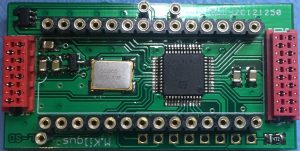 Connoisseurs will notice that I’ve used bigger traces and components on the PCB to make it easier to produce, the space is there after all. What I haven’t finalized yet is the design of the MDV daughter board, which is really trivial but I wanted to wait if my main board worked before I invested even more money! Also I had the idea to provide a dual-card board and even made a working prototype out of my existing QL-SD adapter:
Connoisseurs will notice that I’ve used bigger traces and components on the PCB to make it easier to produce, the space is there after all. What I haven’t finalized yet is the design of the MDV daughter board, which is really trivial but I wanted to wait if my main board worked before I invested even more money! Also I had the idea to provide a dual-card board and even made a working prototype out of my existing QL-SD adapter:
What I didn’t anticipate were the small rails holding down the MDVs in the top of the case, so the whole thing almost but doesn’t quite fit. I’m thinking about lowering the main PCB to be flush with the screw-posts but I’m not sure how mechanically sound this would be and if it’s really worth the trouble. Tell me if you’re interested! I also tried a completely different approach, but that was more a thing done in jest, using an existing ventilation hole in the QL case (that sticker was actually put onto my QL about 28 years ago 🙂 ):
TL;DR
- QL-SD works great now with GoldCard INGOT 5 including Tetroid clone (I think INGOT 6 already worked before) and SuperGoldCard. The original hardware only needs an update of the CPLD code for this. I will probably provide an update service for a fee, tell me if you’re interested.
- I have submitted my fixes and changes to the driver to Wolfgang (thanks again Wolfgang, without his driver I wouldn’t have started my quest!), he said he will check them out soon.
- I started producing a new batch of QL-SDs, though hand soldering them is a bit tedious and I will have to see if I can speed up the process. Price has yet to be determined.
- I created a prototype dual-card adapter, but mechanically it’s not sound yet and even if these problems are overcome it might be difficult to produce. Anybody interested in this? It is 100% compatible with the original QL-SD, of course.
So, tell me if you’re interested or have any other comment.
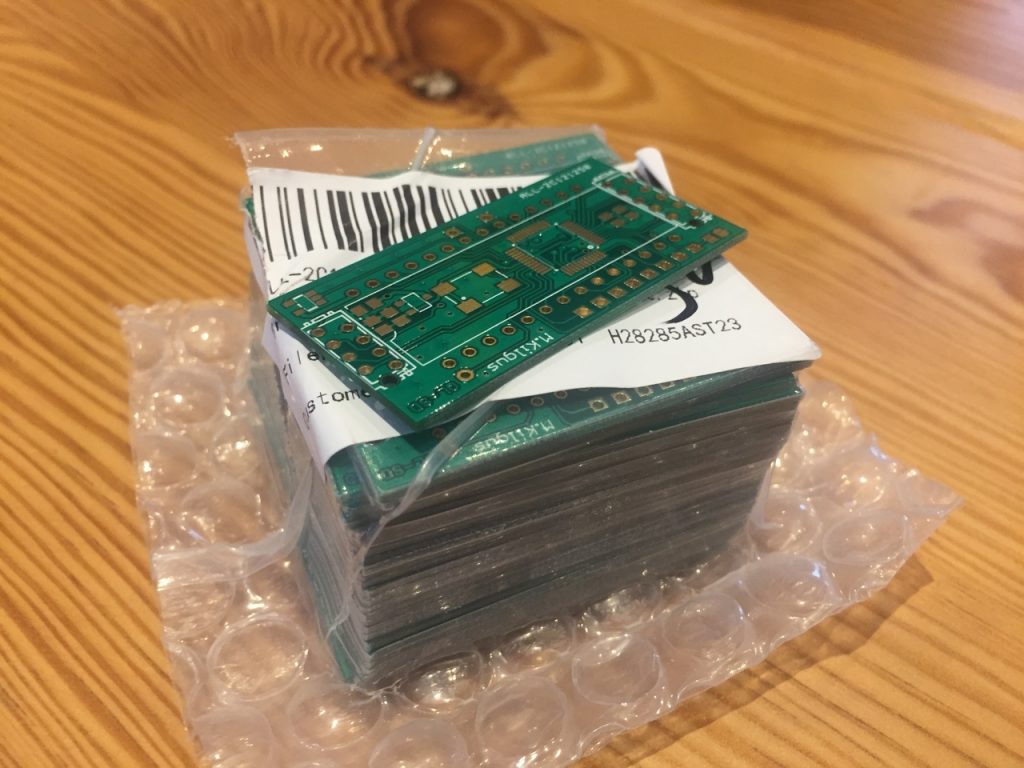
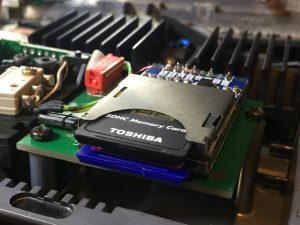
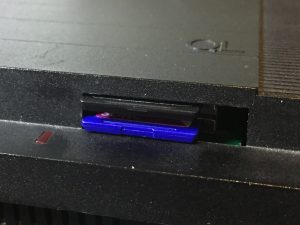
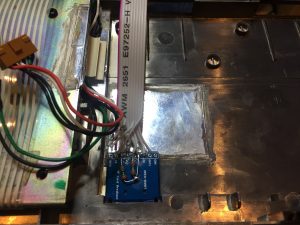
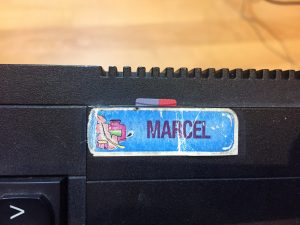
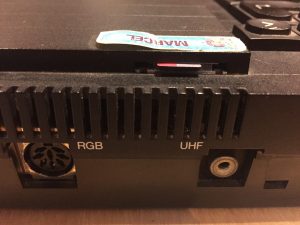
Hi Marcel
Great work, my friend!
Please put me down for a couple of units – the double-unit version, if it proves successful. About time you started to earn some money again, eh? Still gotta get your precious daughter through college, right?
Thank!
First pre-school, then college 🙂 But yeah, I miss a bit the time when I actually had products for sale and not just gave everything away 😉 Not that this will be very profitable, copying hardware is so much more work than software. But I think it’s also good that people can get their hands again on this useful little piece of technology.
Oh, and another thing…
Am I the only one who fundamentally dislikes bending-out those three EPROM pins?
Mechanically, it would be tedious I know (I hacked a Minerva MK1 board to achieve this once…), but if there was any chance a future batch of EPROM boards could be designed with re-routed sockets to avoid the need to bend the pins, I’d be especially happ(ier)
How did you do this? I don’t see any reasonable approach but I might be blind here. I actually build an adapter for burning the EPROM that has the same bend-pin layout as they kept breaking when aligning them for the EPROM burner… and I burned new versions a lot…
And “future batch”, well, I’d be amazed if I run out of the 50 boards first 😉
I have an original QL-SD so definitely interested in an update
Hi Marcel,
Please allocate a unit for me.
I would be interested in getting my original (Paul Veltjens build) QL-SD updated to work with my Gold Card system, once you are ready to do so.
Hi Marcel
My hack of the Minerva board probably couldn’t be made ‘production-ready’ and it was a real pfaff, but having snapped a few pins myself – realigning each time to fit my burner ZIF – it was worth the effort.
For what its worth, I desoldered the original extended pins from a broken Minerva board (some had snapped off already), then carefully removed the individual turned-pin sockets from a spare DIP socket and fitted them individually in to the holes in the Minerva board, protruding down sufficiently to engage the DIP socket on the QL motherboard. To achieve that, I needed to slightly widen the holes in the Minerva board PCB first.
By seating these pin-sockets flush with the board, it was possible to use another 28-DIP socket on top (again, turned-pin) without exceeding the available space under the QL hood once re-fitted. Of course, with the three pins needing re-routing bent-away underneath so as not to make direct contact with the flush pin-sockets below.
A bit of wiring between the three bent-away pins of the DIP socket to their respective solder points on the Minerva board completed the hack and, due to the tight fitting of the DIP socket in to the flush-fitting pin-sockets below, created a fairly robust fit, although I still have to take a little care when prising out the EPROM ready to be re-burnt…
I wouldn’t expect you for a moment to pursue this idea – your initiative to make the QL_SD available again is a true service in itself. – but thought to share this proof of concept 🙂
Hi Martyn,
still hard to visualize it but seems like a real difficult thing to produce 😉 On the other hand, producing an adapter so that you don’t have to bend the legs back for a turn in the programmer is real easy, Just a scrap breadboard PCB with the same pinout as e.g. QL-SD, but the bent pins connected to the straight pins. Build this within 5 minutes after throwing away the second EEPROM 😉 I had to burn a *lot* of EEPROMs the last few weeks and not lost any more afterwards.
Cheers, Marcel
Now that makes a lot of sense! I’ll go build the adapter 🙂
Hi Marcel. I read with interest above: “The original hardware only needs an update of the CPLD code for this. I will probably provide an update service for a fee, tell me if you’re interested.”
Please put me down for an upgrade as well as a new unit, ideally the double-unit version.
Many thanks,
Kenn
Hello, Marcel
I just got a QL and I would be very much interested in a QL-SD if you still make these. I live near Paris. Thanks for your great work, hope to hear from you soon